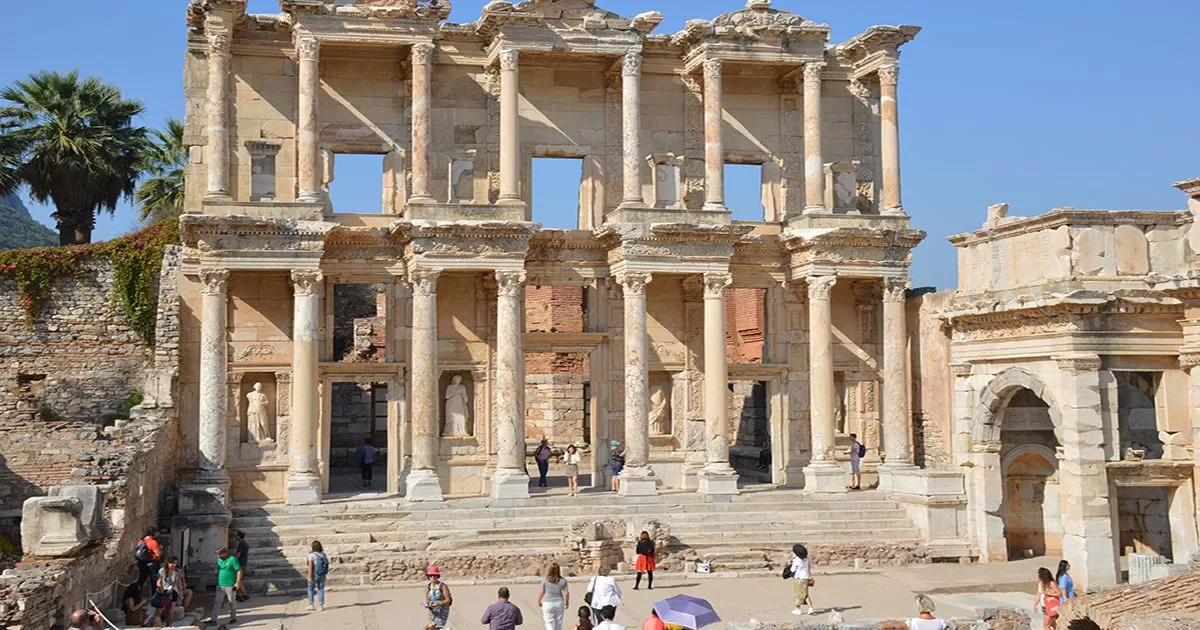MIAMI.- A few minutes from Izmir, today Izmir, in Turkey, are the ruins of the ancient Greek city communicationwhere the enormous theater overlooking the Aegean Sea and the imposing façade of Celsus’s Roman library still remain.
To know the incalculable value of Feso, we must mention its history. The Greek geographer and historian Strabo (63 BC 24 AD), known mainly for his work Geography, tells that Ephesus was called Smyrna after an Amazon, where the small town of Ayasaluk still exists, whose name is believed to come from the Greek hagios. theologos, that is, the holy theologian.
After long years of revolts and wars, Alexander the Great, king of Macedonia, arrived in Ephesus in the year 334 BC. C. after evicting the Persians and suppressing the oligarchic system that prevailed in the city and establishing a Greek-style democracy.
The Greeks, under the command of King Croesus, built a temple that they dedicated to the goddess Artemis, protector of hunting, virgin land, births, virginity and maidens, according to Greek mythology, who was part of the Seven Wonders. of the ancient world.
Two centuries later, when the Roman Empire occupied the peninsula of Asia Minor, after the great battle of Actium in 44 BC, the Romans built a port and Ephesus prospered to be an important city in the eastern basin of the Mediterranean Sea.
Around the years 114-120, the Library of Celsus was built and, with an estimated capacity of 12,000 volumes, it became one of the largest of its time.
In 262, Ephesus was devastated by the Goths and the temple of Artemis, which the Romans dedicated to their goddess Diana, was destroyed.
Since then the city entered a decline that was accentuated by two earthquakes that occurred in the years 358 and 368.
dolphin said
Three important avenues of the ancient city distinguish this archaeological center, which UNESCO recognizes as a world heritage site.
If we enter through the secondary gate of the urban area, where the gora or main square was located, we will walk along Curetes Avenue, where there are several places of interest; until you reach Celso’s library.
On this route we see the Gate of Hercules, the fountain of Trajan and the temple of Hadrian, of the Corinthian order, all built in the 2nd century.
Of them, Hadrian’s temple stands out for being one of the best preserved and most beautiful structures on Curetes Street. It was built before the year 138 and dedicated to the emperor Hadrian, who visited the city in the year 128.
The façade of the temple has four Corinthian columns that support a curved arch, in the middle of which a relief of Tiche, goddess of victory, stands out.
The side columns are square. The pedestal, with inscriptions in front of the temple, is the base of the statues of the emperors Diocletian, Maximian, Constantius I and Galerius.
There are also the famous public baths: a row of 36 holes, built in marble, extends along three long benches, inside which fresh water flowed to carry away the waste.
At the end of the avenue the impressive façade of Celso’s library appears, as if it were a cliff.
Flanking the entrance are four pairs of composite columns (mixed Ionic and Corinthian), which are raised on pedestals. Just above is a set of Corinthian columns.
These pillars, on the lower level, frame statues of female personifications of virtues: Sofa (wisdom), Episteme (knowledge), Ennoia (intelligence) and Arete (excellence).
On one side of the ancient library is the marble path, which leads to the great theatre, which was built by the Greeks and enlarged by the Romans; which is located in a very outstanding position that dominates the landscape that ends at the old port.
With a width of 145 meters and 30 meters high, it could accommodate up to 24,000 spectators.
A few steps away is the Via Arcadia, which leads to the coast and the disused port that was built by the Romans.
How to get there
Turkish Airlines offers direct service from several American cities, including Miami, to Istanbul Airport in Turkey, where you can take a plane to Izmir and visit Fessus.
If you carry a US passport, you can choose to request an entry permit to Turkey through the airline’s portal or another one enabled by the turkish government. In both cases it is a quick process, which only requires showing your identification and you now pay 50 dollars.



